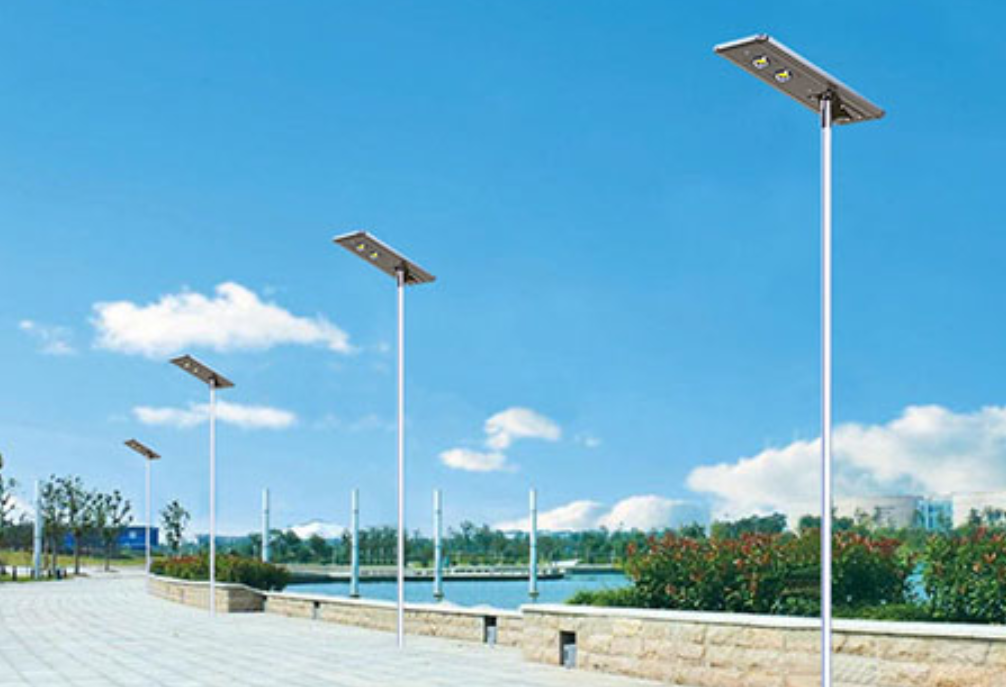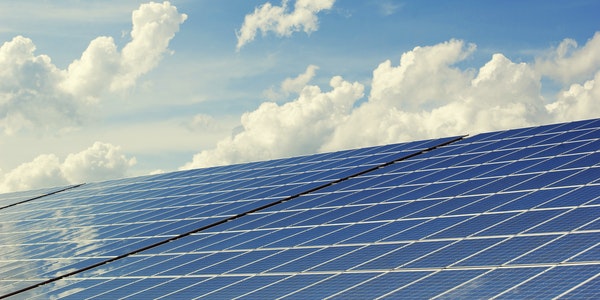Brief Introduction to Solar Energy
Solar energy usually refers to the radiant energy of sunlight. The nuclear reaction from “hydrogen” fusion to “helium” inside the sun continuously releases huge energy and continuously radiates energy into space. This energy is solar energy. The radiant power emitted by the sun into space is 3.8×1026W. Only about one part of 2 billion of the energy is received by the earth, that is, 1.8×1017W. In other words, the energy that the sun shines on the earth per second is equivalent to the heat released by burning 5 million tons of coal. Broadly speaking, solar energy is the source of many energy sources on the earth, such as wind energy, chemical energy, and water potential energy. Solar energy in a narrow sense is limited to the direct conversion of solar radiant energy, such as solar photovoltaic power generation.
Division and status quo of solar photovoltaic industry structure
From the perspective of the composition of solar photovoltaic systems, the industrial structure of solar photovoltaics can be divided from the production of silicon materials (polysilicon materials) to the production of solar cells. The structure of the industrial chain is divided as shown in the figure. The distribution of enterprises in the industrial chain presents an obvious pyramid structure (smallest at the upstream and large at the downstream).
-
solar polysilicon material
The first layer is the production of solar polysilicon materials, which is the most technically difficult and belongs to the upstream of the industrial chain. Currently there are only a handful of manufacturers, such as HEM BCK, MEMC, REC in Norway, Tokuyama Toykuyama in Japan, Sumitomo, Mitsubishi, Mitsui, and Wacker in Germany. They have severely monopolized the global polysilicon supply. The total output of these seven polysilicon companies accounts for more than 95% of the world’s total solar polysilicon output. Due to technical barriers, almost no company can enter the field of polysilicon production and manufacturing very quickly, and its production capacity is far from the competitors of the world’s seven giants. Currently, major institutions and companies engaged in polysilicon research and production in China include Emei Semiconductor Materials Research Institute, Sichuan Xinguang Silicon Industry, Luoyang Zhongsi, Wuxi Suntech and Jiangxi Saiwei LDK all plan to develop upstream silicon materials. In addition, Jiangxi Saiwei Saiwei LDK laid the foundation for the production of 15,000 tons of polysilicon materials in August 2007.
1.2 Solar polysilicon chips
The second layer is the production of silicon wafers. The technical difficulty is second only to the manufacturing difficulty of polysilicon, which belongs to the middle reaches of the industrial chain. In this process, the main technical processes include ingot casting (or single crystal growth), square cutting and rolling grinding, multi-wire cutting machine slicing, chemical etching and polishing. The ingot (or single crystal growth) link belongs to the field of high energy consumption, and the investment scale of the cutting machine is large, and the equipment investment accounts for more than 60% of the initial total investment. Major manufacturers include rweshottsolar, sharp, Q-Cells, bpsolar, deut2schesolar, Kyocera, etc. Baoding’s Tianwei Yingli and Jiangxi Saiwei’s LDK are Chinese representatives in this field and have the ability to produce silicon wafers.
1.3 Solar cells, modules
On the third level, there are more than 40 solar cell manufacturers in the world. The representative companies in China are Suntech Wuxi and Yingli Tianwei. Their production capacity and output belong to the mainstream solar cell manufacturers in the world. At the bottom is the module. The technical content of battery packaging is relatively low, and the entry threshold is low. This is a labor-intensive industry. There are more than 200 manufacturers worldwide, and many domestic companies are also engaged in packaging business.
Polysilicon
2.1 Definition and classification
Polysilicon is the cornerstone of the global electronics industry and photovoltaic industry. The definition of polycrystalline silicon is: when molten single crystal silicon solidifies, silicon atoms are arranged into many crystal nuclei in the diamond lattice. If these crystal nuclei grow into crystal grains with different crystal plane orientations, polysilicon will be formed. Polysilicon is classified by purity and can be divided into metallurgical grade (metal silicon), solar grade and electronic grade.
(1) Metallurgical grade silicon: The carbon in the electric arc furnace reduces silicon oxide, which usually contains about 95% silicon, up to 99.8%.
(2) Solar grade silicon: Its purity is between metallurgical grade silicon and electronic grade silicon. It is generally considered that the Si content is in the range of 99.99% to 99.9999%.
It is used to make solar cell chips.
(3) Electronic grade silicon: Generally, the silicon content is required to be greater than 99.9999%, and the ultra-high purity is 99.999999% to 99.999999%, which is mainly used for semiconductor chip manufacturing.
2.2 Production process status of solar grade polysilicon
2.2.1 Traditional technology
The traditional production methods of solar grade polysilicon are mainly SiHCl3, SiH4 and fluidized bed reaction.
(1) Chlorosilane method
The chlorosilane method is also called the Siemens method because it is named after Siemens. It is currently the main method of polysilicon production. In this method, HCl (or Cl2, H2) and metallurgical grade industrial silicon are used as raw materials. Synthesize crude silicon (metal silicon) powder and HCl at high temperature to produce SiHCl3 for chemical refining and purification. Then, the SiHCl3 is subjected to multi-stage distillation to make the purity more than 9 nines, and the total content of metal impurities should be less than 0.1. Finally, SiHCl3 (1100-1200℃) is reduced by ultra-high purity hydrogen on the silicon core in the reduction furnace to grow Produce high-purity polysilicon rods.
(2) Silane method
It is a process of preparing silane from fluorosilicic acid, sodium, aluminum and hydrogen as main raw materials and auxiliary raw materials, and then thermally decomposing the silane to obtain polysilicon. The purity of silicon obtained by this method is one order of magnitude higher than that of the Siemens method.
(3) Fluidized bed reaction
Polycrystalline silicon is made from SiCl14 and metallurgical grade silicon through fluidized bed reaction.
2.2.2 New technology
In addition to the above-mentioned traditional production processes, several new technologies for the production of solar-grade polysilicon have emerged in recent years, some of which have matured and formed a certain industrial scale.
(1) Preparation of solar-grade polysilicon by chemical method
On the basis of the electronic grade polysilicon production process, all manufacturers have combined the company’s production process to develop a new polysilicon reactor technology. This method can easily realize low-cost manufacturing using existing resources.
①Dokukuyama Company: Developed the vapor deposition method, which uses sihc13 as the raw material for vapor phase reaction in a barrel reactor to directly deposit liquid silicon. The precipitation rate of this method is 10 times faster than the Siemens method, which greatly improves the production efficiency and reduces the cost.
②Wacke company and SGS company: use SiHCl3 and SiH4 as raw materials, and adopt an improved fluidized bed process for reduction and thermal decomposition.
③GT Solar: Use SiH4 gas to deposit polysilicon in a specially heated silicon tube. In addition to the advantages of the large area of the silicon tube, the silicon tube is also used as a seed material.
(2) Preparation of solar-grade polysilicon by metallurgical method
Because of its low environmental pollution, no need for remelting equipment and relatively low production costs, it has attracted the attention of researchers all over the world. With the development of material processing and preparation technologies, new metallurgical preparation technologies have been introduced into the production and research of solar-grade polysilicon, and fruitful results have been achieved.
①Electron beam vacuum melting
The electron beam vacuum melting is performed in a vacuum. The vapor pressure of silicon at 1700K is 0.0689pa. At this temperature, impurities with a vapor pressure higher than this value will volatilize, such as phosphorus and aluminum.
②Regional suspension smelting
The partial suspension melting is not to melt all the bars, but to use an induction coil (electron beam or ion beam) to heat and melt a section of alloy rods, and then gradually move from the lower end to the upper end. The curing process is also performed sequentially. After the melting zone is completed, impurities are enriched to the upper end. This purification method is very effective for removing most of the small metal impurities in industrial silicon. However, the amount of purification is very small, only suitable for laboratory research, and there is still a long way to go before industrial applications.
③Plasma arc melting
As a new melting method, plasma arc melting is playing an increasingly important role in material processing. One of its main uses is to purify and refine metal materials.
Because the heat provided by the plasma arc is concentrated, it is easy to cause uneven heating of the charge. Usually an induction coil is installed to move the liquid metal, which is called plasma arc induction melting. The results show that the use of dual heat source heating significantly improves the thermal efficiency, and the heat and mass transfer process is changed through electromagnetic stirring, which is beneficial to the temperature uniformity of the liquid metal and the floating of impurities. Plasma arc melting can flexibly change the working gas and generate a neutral, oxidizing or reducing atmosphere. If an oxidizing atmosphere is used, boron and carbon can be removed by oxidation. As long as the high-power plasma arc generator is developed, mass production can be realized, and it has a good industrial application prospect.
④Cold crucible electromagnetic continuous casting
Japanese scholar Ciszek first introduced cold crucible electromagnetic continuous casting into the preparation of solar-grade polycrystalline silicon ingots. In this way, the molten silicon does not contact the crucible, which can effectively prevent the crucible from contaminating the molten silicon. In addition, by controlling the direction of heat flow during continuous casting, directional solidification can be achieved. The columnar crystals with large crystal grains are obtained, and the photoelectric conversion efficiency is 15-16%.








